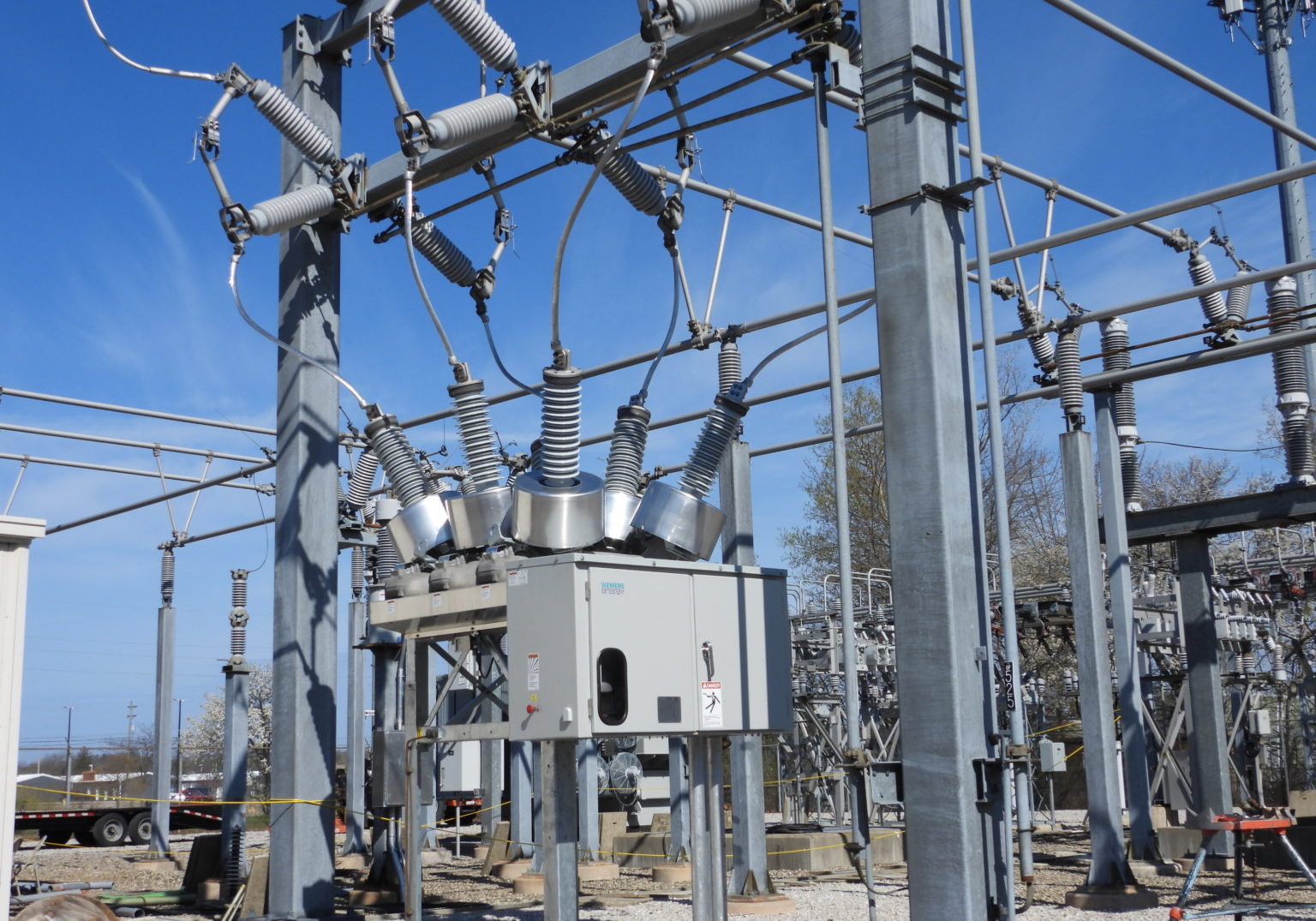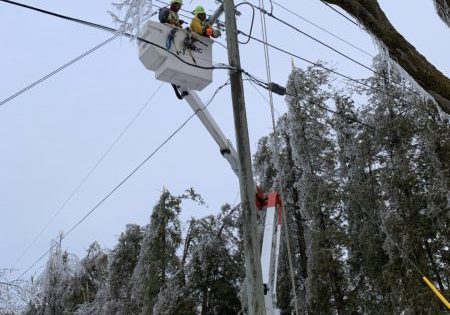One of the benchmarks of sound and responsible management for a utility is the planned capital expenditures to reinvest in the equipment and infrastructure that supports the transmission and distribution of our community’s energy needs.

Within the system outlined above, there are power transformers, voltage regulators, circuit breakers, fuses, controls, arresters, and more. Thus, there are plenty of stress points at which a system can break down, resulting in power outages. According to the Department of Energy, power outages cost the U.S. economy up to $70 billion annually. When a utility allows the resources, it relies upon to manage a community’s power to fall into disrepair or overlooks them as part of a well-managed infrastructure plan, reliability, and affordability, two of the pillars of the BLP’s mission, suffer.
In a report to the Board of Directors earlier this year, the BLP’s distribution and engineering manager, Rob Shelley, shared the BLP’s key performance indicators related to the reliability of a system:
“The GHBLP has been committed to managing and keeping pace with the ever-changing and challenging electrical landscape for over 125 years. While none of us has a crystal ball, the BLP is looking forward and making wise investments into the system,” expressed Shelley. “These once-in-a-generation upgrades are made with the future electrification of our everyday lives in mind, including EV’s, distributed generation, solar, wind, and batteries.”
To continue performing at its high level, the BLP prioritizes maintaining its infrastructure. Capital expenditure projects related to infrastructure typically follow a 30-40 year cycle, with transmission lines typically having a 50-year lifespan and large power transformers averaging around 40 years. Contributing to its ongoing efforts to maintain its American Public Power Association Diamond-Level RP3 rating, the BLP has spent approximately $14 million on four major infrastructure projects since 2017. These investments have significantly increased our ability to import electrical capacity allowing room for our community to grow well into the future.
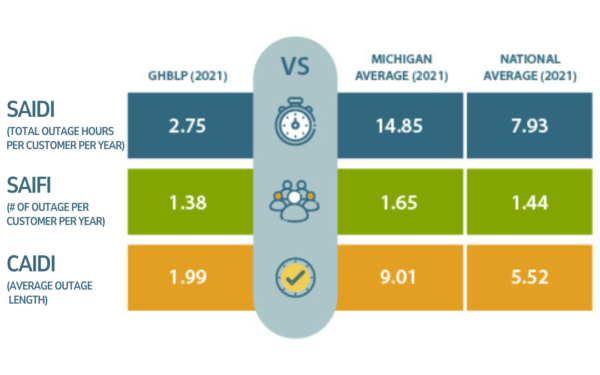
The Grand Haven BLP substation network
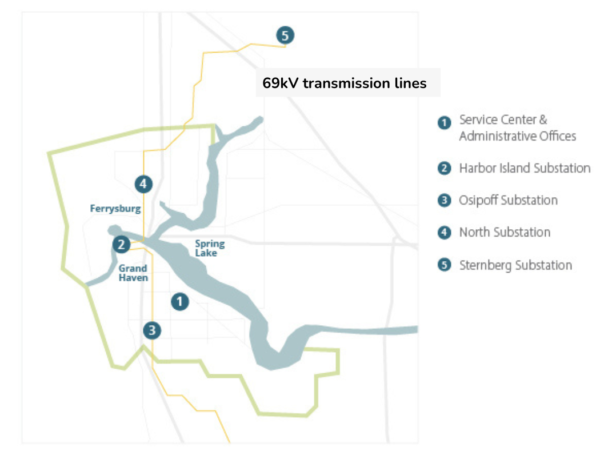
Transmission Lines
From 2017 to 2019, the BLP invested almost $6 million to replace the 69 kV (kV = kilovolt) transmission lines and poles. Because of its massive scope, the utility separated the project into three stages. The first stage, conducted in 2017, consisted of the transmission system from the Osipoff Substation to the Harbor Island Substation at a cost of $1.9 million. The second stage launched in 2018 and ran from the Harbor Island Substation to the North Substation at a cost of $1.1 million. The last stage wrapped up in 2019 and included the transmission lines from the North Substation to the Sternberg Substation at a cost of $2.9 million.
Osipoff Substation (serving the south side and into Grand Haven Township)
The BLP recently installed a brand new 40 MVA (Mega Volt Amp) transformer to increase reliability on our larger distribution circuits. This substation serves the BLP’s largest single customers located in the industrial park in Grand Haven. It also serves the critical loads of the hospital and medical center. The distribution circuits from this substation reach from the lakeshore all the way down Mercury Drive and a little past River Haven. It replaced a smaller transformer that was relocated to the North Substation.
Transformers are crucial to a network, but they come with significant expense and the lead time to replace one can extend to 12+ months. These factors make careful and proactive planning a necessity in order to avoid service disruption. For the Osipoff Substation, the new transformer plus installation cost $1.3 million. The BLP spent an additional $1.5 million for a new control house with all new relays (see picture below) and new 69kV circuit breakers.
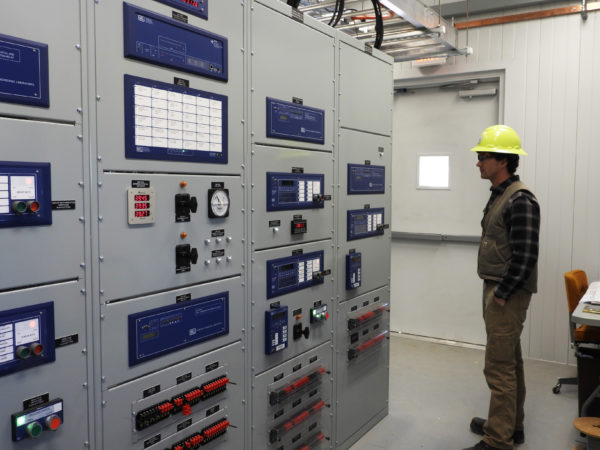
North Substation (serving the City of Ferrysburg and Spring Lake Township)
The BLP relocated the smaller transformer taken from the Osipoff substation, rated at 20 MVA, to the North Substation to add redundancy and reliability to Ferrysburg and Spring Lake. The utility also installed new relays and 69kV breakers. The planned splitting of the westernmost circuit feeding Ferrysburg into two new circuits this past April will increase reliability by minimizing the number of customers affected by an individual outage. This also provides the benefits of separating out downtown Ferrysburg and the North Shore Drive area.
Additionally, this will allow the BLP to transfer the customer’s load between the two circuits facilitating the upcoming replacement of Smith’s Bridge. These substation improvements cost $1.3 million. The upgrades now provide full redundancy north of the Grand River.
Harbor Island Substation (serving the City of Grand Haven)
The BLP team completely rebuilt this substation in 2020 with all new circuit breakers, switches, and relay controls at a of cost $4.0 million. This substation serves the City of Grand Haven circuits. Constructed to 138 kV specifications, this allows for future expansion and interconnection of emerging technologies such as energy storage, a community solar garden, and capacity for increased load growth.
Additionally, the Sternberg Substation will get a new 69kV breaker and relaying in the near future to increase our reliability interconnection from the North. This project is in the engineering and design phase.
The power grid represents one of the greatest engineering achievements of the modern world and the BLP takes maintaining the reliability of its part of the system seriously. The capital spending projects outlined above reflect the BLP’s holistic approach to maintaining high standards of reliability throughout its network, which serves approximately 15,000 customers in the City of Grand Haven, City of Ferrysburg, Grand Haven, Spring Lake, and Robinson Townships.
